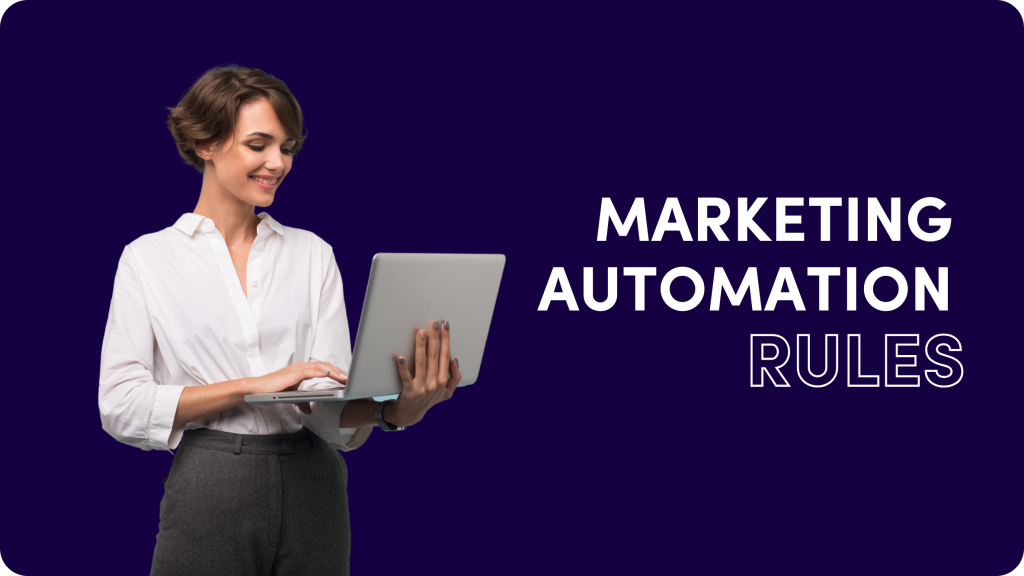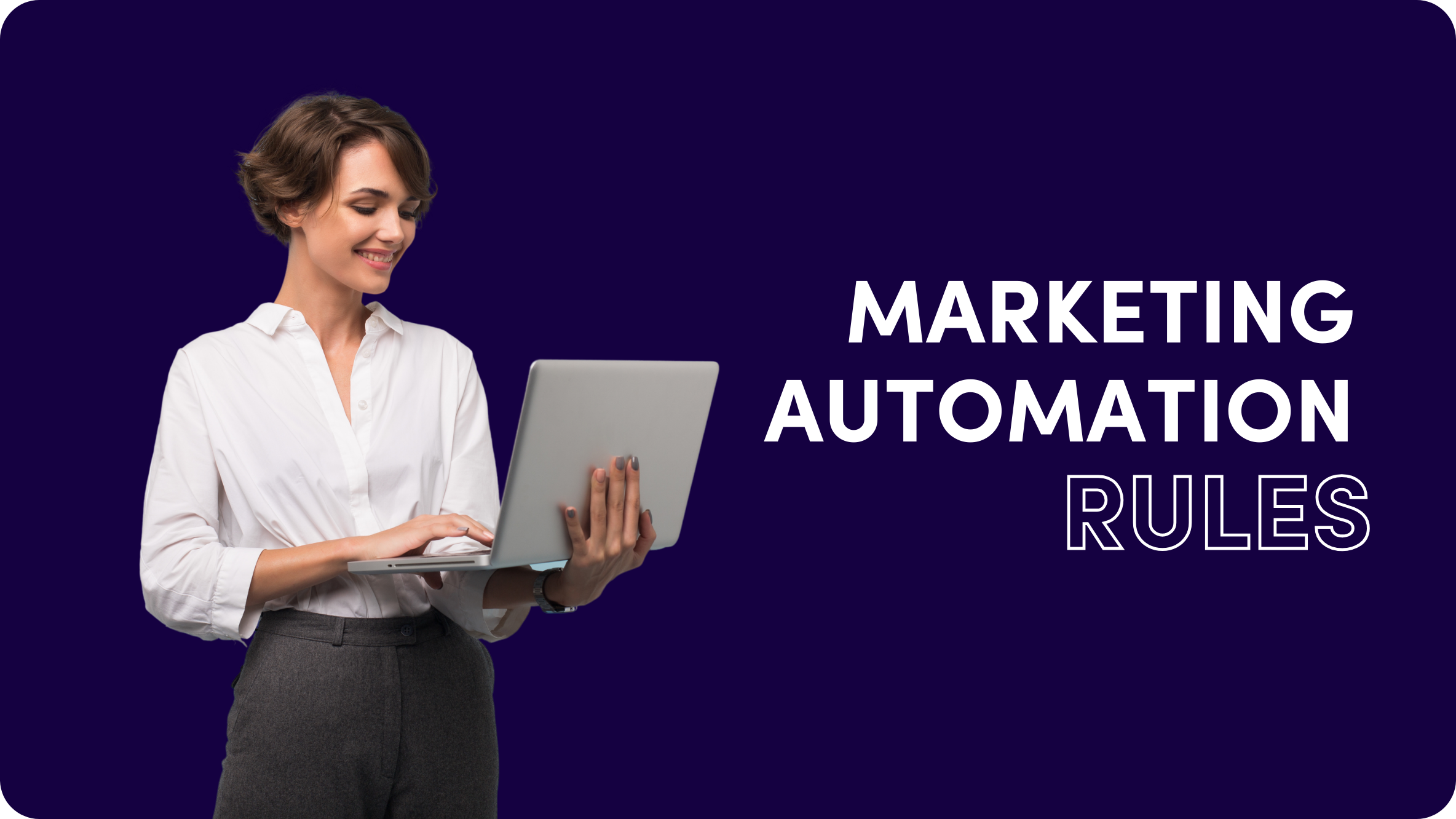The Guide to Getting Started with Marketing Automation

Your customers have expectations. Period. Whether you’re a small business or corporation, whether you’re a B2C or B2B company, today’s consumers are savvy and demanding, So they turn to you with a basic set of expectations. Your mission is to meet those expectations, and even rise above them.
Marketing Automation is Your Friend
What do your customers expect? That you will give them whatever they want, whenever they need it, without having to ask for it. Seems like ‘mission impossible’, but in fact it’s totally possible with marketing automation.
While it might sound a bit technical, marketing automation is deeply human and relevant. It’s how your brand connects with customers at every touchpoint, both online and offline, and it involves all the teams in your organization, from marketing to customer service, supply chain and sales.
Marketing automation aims to give you a 360-degree picture of your customers, who they are, what they are doing, and how they interact with your business – any time, anywhere.
But before we dive into Marketing Automation 101, let’s start where every marketing activity must – by getting to know your customers.
Who Are Your Customers?
There’s one thing every target audience or consumer segment has in common today – they spend a lot, if not most, of their time online. Smartphones have become the central hub of their lives. They work, network, socialize, and shop via mobile devices. Everything they need to access is right there, immediately available. What’s more, consumers are often interacting with multiple screens at once, jumping between mobile and smart TVs and smartwatches, for example.
In this new world, filled with every distraction under the sun, it is harder than ever for businesses to catch the eye and attention of potential customers. With all these devices, platforms, and channels, how can you possibly meet your customers with the right message, at the right time, in the right place?
Hello, Marketing Automation
Marketing automation allows you to build personal relationships with customers, and even maintain different relationships with hundreds or thousands of customers at the same time.
By managing customer interactions online, marketers can leverage customer data and use those insights in a smart and meaningful way. Instead of manually uploading and tracking each digital campaign separately, marketing automation enables monitoring all campaigns in one place. It provides a complete and comprehensive picture of all the stages of the customer journey, from lead generation to nurturing, conversion, and retention, all the way to the loyalty stage.
With this ‘superpower’, you can optimize stages in the journey that are underperforming, gain a deeper understanding of customer behaviors, and get to know new audience segments that entered the marketing funnel, even if you never knew they existed before.
Marketing Automation: The Numbers
If you’ve made it this far and are still not convinced about the power of marketing automation, here are some behind-the-scenes numbers that might do the trick (courtesy of Invesp).
- Marketing automation drives up to 14.5% average increase in sales productivity.
- It reduces marketing overhead by 12.2%.
- 77% of marketing automation users saw an increase in conversions.
- 91% say that marketing automation is very important for the success of their activities.
What’s more, in a rapidly changing marketing environment, and with frequent announcements about new data management policies at big tech companies like Facebook and Apple, marketers are starting to realize that they are better off keeping their most important asset (their customer data) “in house”, rather than handing it over to outside entities. This places enormous power in the hands of your business, and marketing automation is how you can leverage it.
5 Steps to Getting Started with Marketing Automation Campaigns
- Get to know your customers and data
- Map your customer journey
- Craft a content strategy based on your journey and goals
- Build up your email distribution list
- Monitor and optimize, constantly
So we’ve made the case for marketing automation, what it is, and why it’s important. Now we’ll look at how it’s done. Marketing automation is complex, so these broad guidelines are a great place to begin. Here are 5 steps you should follow when getting started with a marketing automation campaign:
1. Get to know your customers and data
Traditional customer demographics, like location, age, and gender, are not enough. In marketing automation campaigns, the data that matters is far more granular, for example:
- Where did the customer see your ad?
- What device were they using?
- How many times did they log in to your website before going through checkout?
- Did they contact Support to finish the checkout process?
- Most importantly, how many touchpoints did the customer have with your business before converting (including physical, like digital interactions in-store, and online, like website visits)?
2. Map your customer journey
After gathering all the data, you can now start mapping your customer journey. The customer journey is the “flow” of the customer’s ongoing interactions with your company as they move along the marketing funnel. Map out the various scenarios that customers may take. You will use this map to create impactful suggestions relevant to customers at every stage of the journey and for whichever mindset they are in. With marketing automation software, you will automate the customer journey and embed it as part of your omnichannel ecosystem, ensuring your customers receive the right message at the right time for them.
3. Craft a content strategy based on your journey and goals
So marketing automation allows you to build personalized journeys with your customers. But say you have 1,000 customers in your database – you can’t possibly write individual emails for each of them after manually checking on their specific journey, right?
But remember too, your customers have great expectations. They do expect personal emails and messages. For customers to stay loyal to a brand, they must feel special, enjoy positive experiences, and receive added value from their interactions.
Marketing automation bridges the gap between offering that important personalized touch and scaling your customer base. Here are some ways to create personal experiences for many customers at once:
Deliver small “ah ha” moments
Surprise your customers when they least expect it. For example, a small birthday greeting or personal message on the anniversary of their first purchase. These are proactive tactics in which you reach out to the customer, rather than just waiting for them to contact you so you can respond. Marketing automation facilitates this at scale, so your brand can stay top-of-mind at all times.
Refer to a customer’s latest action
This is a great way to show customers you value them and are paying attention. Let them know that you appreciated their visit to your website last week, or offer them products similar to the ones they purchased recently. Marketing automation lets you track user actions, so you can refer to them in future campaigns.
Provide extra value
Of course, purchases are critical to your business’s bottom line, but other things are also important to building long-term customer relationships. By providing real added value to customers, the level of engagement will increase, and they may even become ambassadors, doing the powerful work of recommending your brand to their friends and family – hands down one of the best ways to acquire new customers. Examples of providing value can include things like sending tips on how to get more from a product or purchase or telling the story behind the brand or product so the customer can connect to it emotionally. There are infinite ways to provide value – be creative and original, and the rewards will pay off.
4. Build up your email distribution list
Of course, digital marketing needs an audience. You want a strong list of contacts that you can reach out to, so make sure that your business has several ways for potential customers to sign up for your marketing list. Fortunately, automation makes this process easy.
With the help of sign-up tools like HubSpot, the contacts you collect will flow right into your marketing automation software. You don’t have to deal with spreadsheets or batch uploading. A customer signs up, and their name and email address automatically go on a “new subscriber” list.
Here are a few ideas to help you collect more contacts for your marketing list:
Create a signup form for a landing page or webpage
Create signup forms to promote gated content. The customer must provide certain information to download or view it. If you request more information, such as Job Title, it will help you build accurate customer segments for future targeting.
Put a subscribe button on your homepage
Want something a little more subtle on your website than a pop-up? Try a subscribe button. This small button can sit anywhere on your website, enticing customers to sign up for your offering, such as a newsletter or blog updates. A small pop-up form appears only if the button is clicked.
Make customers into your ambassadors
Word of mouth is the best way to reach out to new customers. One of the most effective ways to do that is by creating a referral program that gives your current subscribers some incentive to recommend your brand to their friends.
5. Monitor and optimize, constantly
OK, so your campaigns are automated and up and running. Time to relax? Definitely not. This is when the action really starts. Now comes the monitoring and optimization stage. Keep a constant eye on your data, tracking customer behaviors and actions, and watching out for new pain points and trends, so you can adjust your customer journeys as necessary. Gaining meaningful data-driven insights so you can continually optimize and improve your campaign results is what marketing automation is all about.
Considering Marketing Automation?
Getting started with marketing automation is a big step, but a necessary one in our digital-first world. Take a look at these recommendations for top marketing automation platforms. Having great software and tools at your disposal is fundamental to making your marketing automation work for you.


